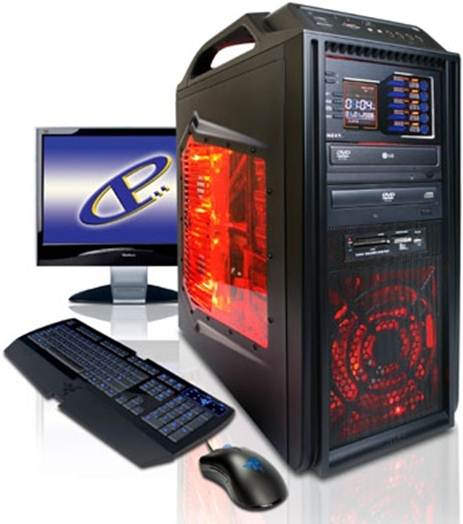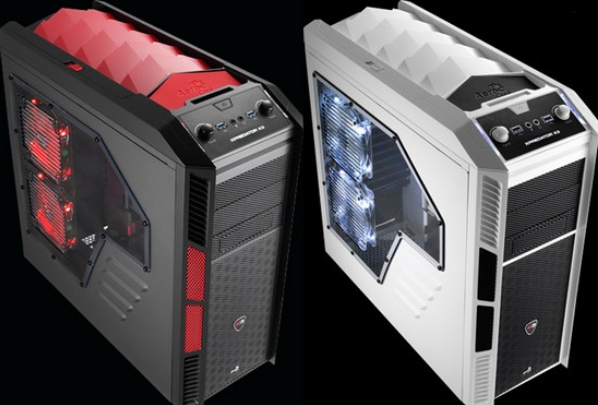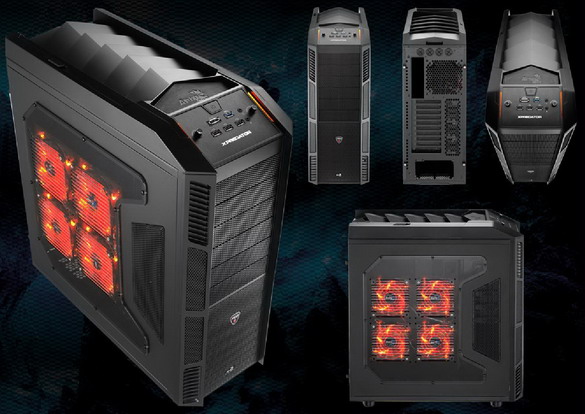Can’t get no satisfaction
The one thing that the Sis can’t hope to
replicate though is the sense of achievement born of putting together your own PC
from scratch. The first time it breezes through a stress test, or the first
time you boot your favourite game, or even just the very first time you get a
successful POST screen will give any of us happy geeks a thrill.

The
first full PC I ever bought after joining PCF, all those years ago, was a $750
CyberPower machine. By tweaking the spec I was able to put together a machine
that matched my modest means and was targeted at what I use my PC for the most:
gaming.
There’s also the masochist time, who
relishes the prospect of finding a solution to any bugs he comes across. But if
the thought of bug-fixing a machine you’ve spent mucho moolah putting together
leaves you in a cold sweat, the SI will take much of that worry out of the
equation too. Most builders will include a burn-in period where they test the
stability of the components, and any overclocking that has been under taken on
any of the parts. This will usually catch any errors before the rig even gets
to your desk.
You don’t have to drop a grand to pick up a
decent machine from an SI, though. The first full PC I ever bought after
joining PCF, all those years ago, was a $750 CyberPower machine. By tweaking
the spec I was able to put together a machine that matched my modest means and
was targeted at what I use my PC for the most: gaming. Shop around and you can
uncover some bargains – especially if you start looking at last generation
parts. A lot of the system integrators are still offering Nvidia Fermi cards at
decent prices. So how do you choose a system integrator to go to? Well, we’ve
set nine of the top system integrators in the UK a challenge to put together
the best $1,500 gaming PC they can. Each of them has built something a little
different and where they have spent the money, and how they have assembled
their rigs, should give you a good idea which SI should get your cash. Whether
it’s lightning-fast boot times, eye-pooping gaming frame rates or the peace of mind
of a long-lived warranty, one of these rigs could be for you.
“You don’t have to drop a grand. Shop
around and you’ll find some bargains”
What of warranty?
Aftersales support can vary massively
Performance out of the box and relative
pricing shouldn’t be the only things you base your buying decisions on. One of
the biggest bonuses of buying a full rig from a system integrator is the level
of cover you receive as standard. As with all components, you will
automatically receive a full replacement on any parts that go wrong within a
year of delivery. After that it’s up to the individual SI what it provides.
The standard offering is the three-year
limited warranty. This covers parts and labour cost for the first year, then
two further years of labours/repair cost, but not parts. It also seems standard
to offer free collect and return carriage on any returns or repairs for the
first month from delivery. Of the nine Sis that submitted machines for review,
Scan and Chillblast are the ones that stand out in terms of their standard
warranties. The Scan 3Xs cover gives you a full year of on-site cover – the
following day if possible. That’s then followed by two further years of parts
and labour cover on a return to base level, which is unprecedented.
Chillblast’s cover is also pretty good, giving two full years of collect and
return cover on parts and labour.
When you’re deciding which SI to throw your
cash at, it’s always worth investigating what they offer in term of customer
service. Most sites will have FAQ pages where you can read the terms and
conditions of their standard warranties, but they should also have manned
telephone lines you can call up to get advice well as information.
Sites like Vibox and YOYOTech have online
live chat options available from their websites, which let you ask a question
about a build or the types of aftercare they offer and get an instant response.
Super test: Advance Technologies ATEX-Xpredator

The very first thing to catch your eye on
this AdvanceTec build is the striking XPredator chassis, all stormtrooper white
with black grills getting all up in yours. It also has a huge Perspex side
panel, which reveals the second thing to catch your eye – the water-cooling
setup.
This isn’t the only build in the test to
feature liquid as an aid to chilling out your chips – the Cyberpower machine
over on p12 has a closed-loop water cooler – but this is the only one to use a
separate pump and reservoir setup. That means the setup can be expanded if you
decide you want to include a loop for the graphics card, or even stick another
reservoir in between to provide extra cooling for both.
Sadly though, the extreme (and extremely
pretty) water-cooling setup in this machine hasn’t translated into a serious
overclock on the CPU itself. In fact, the ATFX rig ships with the slowest
clocks of all the i5 machines in the test, sitting on its laurels at a mere
4.3GHz.
That means AdvanceTec garners the slowest
CPU benchmarks of all nine test PCs here. That’s a big disappointment
considering how intense the setup looks. With a little light tweaking – a
simple bumping of the multiplier in the BIOS – we were able to get a rock-solid
4.7GHz out of the 3570K.
Lucid
dreaming
It’s swings and traffic circles though, as
it’s the only machine here to opt for an AMD graphics card over an Nvidia one,
and in the benchmarks that really makes a difference. The overclocked HD 7970
may not have the edge in the Heaven synthetic test, but in the four gaming
benchmarks it pulls out a very obvious lead. The only fly in the ointment here
is Advance Tec’s questionable decision to ship the setup with the Lucid Virtu
tech plumbing the CPU and GPU together in-game. In Just Cause 2 and Metro 2033
it made no difference in performance, but it gave a little boost to DiRT
Showdown.
The Shogun 2 test was a different matter,
showing a massive performance boost, but that was tempered by the terrible
graphical errors that accompanied it – something we couldn’t live with, and
would lead to us immediately turning off the Lucid Hyperformance mode.
Smart
response
That perhaps explains why no-one else
wanted to get with the Lucid lovin’, but on the flip side AdvanceTec was also
the only SI to actually enable the Intel Smart Response tech with the small
SSD. Pairing the SSD and HDD together meant it felt almost as responsive as a
full SSd system, and had the same boot time too.

It’s
a bit of a mixed bag for the ATFX rig then; stellar gaming benchmarks but weak
CPU performance
So it’s a bit of a mixed bag for the ATFX
rig then; stellar gaming benchmarks but weak CPU performance. With some BIOS
tweaking you can sort that out, but should you really have to when you’ve put
down a grand for a PC? We’re not entirely sure about that chassis either. From
a distance it looks the business, but up close it feels like a budget option.
It doesn’t have a reset switch, either. Weird. But still, a great looking,
strong gaming machine, with a good balance of components.
|
Vital statics
|
|
Price
|
$1,500
|
|
Manufacture:
|
Advance Technologies
|
|
CPU:
|
Intel Core i5 [email protected]
|
|
Motherboard:
|
gigabyte Z77X-D3H
|
|
Memory:
|
8GB Corsair Vengeance
|
|
Graphics:
|
Sapphire HD 7970 OC
|
|
SSD:
|
60GB Corsair Force 3
|
|
HDD:
|
1TB Seagate
|
|
PCFormat Verdict
|
4/5
|
|
Features:
|
4/5
|
|
Performance
|
4.5/5
|
|
Value:
|
4/5
|
|
This beast’s gaming prowess is second to
none, but the weal CPU performance is such a shame.
|
|
|
|